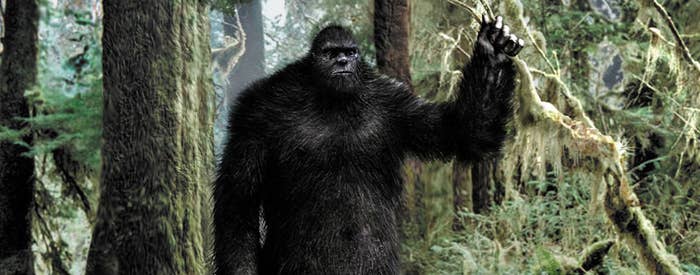
The Pacific Northwest, 1967. Roger Patterson and Bob Gimlin discovered and filmed a great creature roaming the woods. Though the technology of the time did not allow for the authenticity of the film to be completely verified, the body of evidence for Bigfoot's existence is overwhelming and undeniable. The mighty beast exists— and as DevOps evangelists, we should prepare for the day where everything we preach will be put to the test, and we'll have to teach Bigfoot about DevOps.
Hopefully, when a responsible team of Bigfoot hunters locates and captures it, they use humane techniques. Gaining its trust with food or tools would be ideal, but if this is not possible, the minimum necessary dose of a safe tranquilizer would be acceptable. We know very little about its physiology and how various chemicals may react with its bodily systems.
Trapping Bigfoot without tranquilizing it may not be the best move— in fact, being that Bigfoot is likely quite intelligent with a reasonable memory, we would essentially be ruining our first impression with a new species. Trying to explain the foundations of DevOps to an untrusting creature would be unnecessarily hard.
Certainly, though, even under the best of conditions, the great beast will resist. It will find the confines of captivity stressful, and may feel anger toward us as we try to explain continuous development principles to the animal— assuming we are able to devise a common communication system. Bigfoot's brain is likely comparable in size to the human one, as footage from the 1967 video shows. It is highly plausible that not only can Bigfoot learn to communicate with us, but that he would, in time, understand the foundations of DevOps and the advantages it carries over old-style IT and development relationships.
For the first several months, we will probably have to relate to Bigfoot using concepts it already knows and understands. Trees, for example, are generally unmoving, but often produce usable fruit, or branches that can be used as tools. This is analogous to certain management styles Bigfoot may encounter once he enters the workforce. Rocks are hard and generally useless, and could symbolize problems or roadblocks. Forest bugs stuck in fur or sensitive bodily crevices can, somewhat obviously, be likened to code bugs.
But let's not kid ourselves— it would be arrogant to assume this learning process will be a one-way street. When you try to imagine teaching Bigfoot about DevOps, be sure to take a few moments to ask yourself: What will Bigfoot teach us about DevOps?

